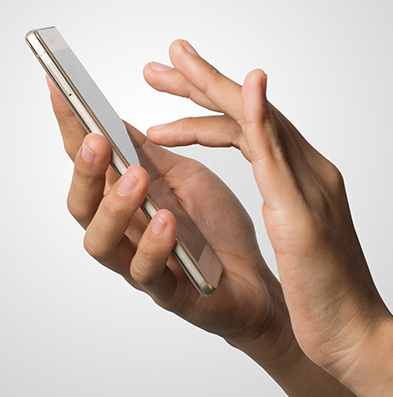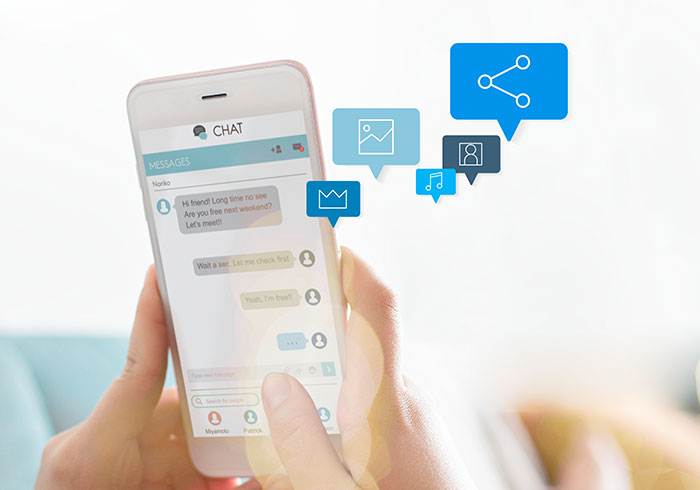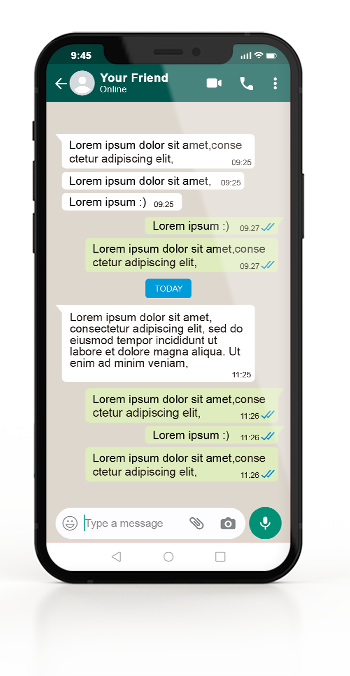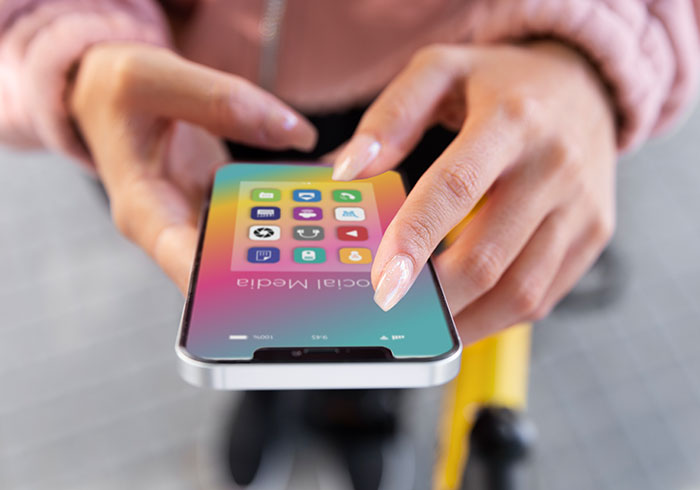
Disclosures
Divulgaciones
SMS, WhatsApp, telephone recordings
Are they admitted as evidence in court?

Keep in mind that sending fake SMS or WhatsApp is very easy, and computer experts know it. For example, search your app store for “free fake sms” and download one of several existing apps, one possible one being “Fake SMS”.
To consider these communications as an element with probative value, the Superior Court of Justice of Galicia, Social Chamber, nº 556/2016, of 01/27/2016, Rec. 4577/2015 , has established four assumptions to accept a conversation or message of this type as a document:
When the party to the conversation does not contest the conversation.
When you expressly acknowledge said conversation and its contents.
When its reality is checked using the comparison with the other terminal involved (display).
When an expert test is carried out that proves the authenticity and sending of the conversation, for a different assumption from the previous ones.
Although article 299 of the Civil Procedure Law allows almost any means or support created or transmitted electronically to be used as evidence in a judicial process. But, as we indicated in the section “legal evidence & legal effectiveness”, the fact that it can be used as evidence should not be confused with the legal effectiveness that this evidence actually has.
SMS, WhatsApp, grabaciones telefónicas
¿Son admitidos como prueba en juicio?

Ten en cuenta que enviar SMS o WhatsApp falsos es muy sencillo, y los peritos informáticos lo saben. Por ejemplo, busca en tu app store “sms falso gratis” y descarga una de las diversas aplicaciones existente, una posible es “Fake SMS”.
Para considerar estas comunicaciones como elemento con valor probatorio, el Tribunal Superior de Justicia de Galicia, Sala de lo Social, nº 556/2016, de 27/01/2016, Rec. 4577/2015, ha establecido cuatro supuestos para aceptar como documento una conversación o mensaje de este tipo:
Cuando la parte interlocutora de la conversación no impugna la conversación.
Cuando reconoce expresamente dicha conversación y su contenido.
Cuando se compruebe su realidad mediante el cotejo con el otro terminal implicado (exhibición).
Cuando se practique una prueba pericial que acredite la autenticidad y envío de la conversación, para un supuesto diferente de los anteriores.
Aunque el artículo 299 de la Ley de Enjuiciamiento Civil permite utilizar como prueba en un proceso judicial casi cualquier medio o soporte creado o transmitido electrónicamente. Pero, tal y como indicamos en la sección “prueba legal & eficacia legal”, no hay que confundir el hecho de que se pueda utilizar como medio de prueba, con la eficacia jurídica que realmente tiene esa prueba.
In order to guarantee high legal effectiveness, it must be able to be examined and compared against it. It is essential to provide experts with digital files and exhaustive documentation that rigorously detail where and in what what state these digital evidences were, guaranteeing their authenticity and integrity.
ANF AC assumes responsibility for the chain of custody of the evidence generated in the communications we manage, whether by means of certified SMS, certified WhatsApp, or telephone recordings, etc.
Para garantizar una alta eficacia jurídica debe poder ser examinado y cotejado de contrario. Es esencial facilitar a los peritos los ficheros digitales y documentación exhaustiva que detalle de forma rigurosa de dónde y en qué estado se encontraban esas evidencias digitales, garantizando su autenticidad e integridad.
ANF AC, asume la responsabilidad de la cadena de custodia de las evidencias que se generan en las comunicaciones que gestionamos, ya sea por medio de SMS certificado, WhatsApp certificado, o grabaciones telefónicas…etc.
Be careful
In certain public forums they advise that if you want an SMS or WhatsApp received to serve as evidence in court, take a screenshot through a notary public, notary or court clerk. This is not enough.

Ten cuidado
En determinados foros públicos aconsejan que si deseas que un SMS o WhatsApp recibido sirva de prueba en juicio, realices una captura de pantalla mediante fedatario público, notario o secretario judicial. Esto no es suficiente.


With Fake SMS you can make an SMS in seconds that supposedly has been sent from the phone you want.
Therefore, even if a public notary intervenes by recording the content that appears on a terminal, in no case can he ensure that the communication examined is truly authentic and complete, an essential requirement for digital evidence to be taken into account. into account in a judicial process.
ANF AC, in addition to recording the content of the communication, captures all the digital evidence that is have occurred during the transaction, and proceeds to its authentication.
Con Fake SMS puedes fabricar en segundos un SMS que supuestamente ha sido enviado desde el teléfono que desees.
Por tanto, aunque intervenga un fedatario público levantando acta del contenido que aparece en un terminal, en ningún caso podrá asegurar que la comunicación examinada es realmente auténtica e íntegra, requisito indispensable para que una evidencia digital sea tenida en cuenta en un proceso judicial.
ANF AC, además de levantar acta del contenido de la comunicación, captura todas las evidencias digitales que se han producido durante la transacción, y procede a su autenticación.
If you intend to capture a WhatsApp conversation, or make a telephone recording, you must take into account the provisions of the Law of Criminal Procedure:
«Common provisions for the interception of telephone and telematic communications, the capture and recording of oral communications through the use of electronic devices, the use of technical devices for tracking, locating and capturing image, the registry of massive information storage devices and the remote registries on computer equipment».

Si pretendes capturar una conversación WhatsApp, o realizar una grabación telefónica, debes de tener en cuenta lo establecido en la Ley de Enjuiciamiento Criminal:
«Disposiciones comunes a la interceptación de las comunicaciones telefónicas y telemáticas, la captación y grabación de comunicaciones orales mediante la utilización de dispositivos electrónicos, la utilización de dispositivos técnicos de seguimiento, localización y captación de la imagen, el registro de dispositivos de almacenamiento masivo de información y los registros remotos sobre equipos informáticos».
ANF AC, does not capture WhatsApp, nor telephone recordings in which it does not participate directly, and we perform the mandatory legal notices whenever we use these communication channels All legal evidence collected is authenticated by means of a long-term seal/electronic signature.

ANF AC, no captura WhatsApp, ni grabaciones telefónicas en las que no participa directamente, y realizamos los preceptivos avisos legales siempre que utilizamos estos canales de comunicación. Todas las evidencias legales recogidas son autenticadas mediante sello/firma electrónica de larga vigencia.

The use of WhatsApp as a communication channel should not surprise us. Instant messaging applications are a reality in today's society. E.g.
Art. 24 of the Collective Bargaining Agreement for the Sector of dressing industries, stuffing, packaging and export of olives (cod. 41000045011982) of Seville (BOP Seville 06/12/14) , where set,
«Calls to work may be made by any means permitted by law and in any case always by posting them on the bulletin board. By way of example, calls made by phone, SMS will be valid. , or WhatsApp or email»
Section n), art. 30. n) Zamora Collective Agreement for Offices and Offices (code 49005705012001) (BOP Zamora 05/02/14), where it is considered a serious fault,
«The use of social networks facebook, whatsapp, twitter... during the working day, either from personal mobile, company mobile or from any computer».< /p>
No nos tiene que extrañar el uso del WhatsApp como canal de comunicación. Las aplicaciones de mensajería instantánea son una realidad en la sociedad actual. P. ej.
Art. 24 del Convenio Colectivo de Sector de industrias de aderezo, relleno, envasado y exportación de aceitunas (cod. 41000045011982) de Sevilla (BOP Sevilla 12/06/14), donde se establece,
«Las llamadas al trabajo se podrán realizar por cualquier medio admitido en derecho y en cualquier caso siempre mediante su publicación en el tablón de anuncios A modo meramente enunciativo serán válidos los llamamientos realizados por teléfono, SMS, o WhatsApp o email»
Apdo. n), art. 30. n) Convenio Colectivo de Sector de oficinas y despachos (cod. 49005705012001) de Zamora (BOP Zamora 02/05/14), donde se considera falta grave,
«La utilización de las redes sociales facebook, whatsapp, twiter.. durante la jornada laboral, bien desde el móvil personal, móvil de la empresa o desde cualquier ordenador».
In addition, we must take into account Law 25/2007, of October 18, on the conservation of data related to electronic communications and public communications networks.
Article 3
1. The data that must be kept by the operators specified in article 2 of this Law, are the following:
a) Data necessary to trace and identify the origin of a communication:
1st With regard to landline telephony and mobile telephony:
i) Call telephone number.
ii) Name and address of the subscriber or registered user.
2.° With respect to Internet access, Internet e-mail and Internet telephony:
i) The assigned user identification.
ii) The user identification and telephone number assigned to all communications that access the public telephone network.
iii) The name and address of the subscriber or registered user who has been assigned an Internet Protocol (IP) address, user ID or telephone number at the time of communication.
b) Data necessary to identify the destination of a communication:
1st With regard to landline telephony and mobile telephony:
i) The number(s) dialed (the destination telephone number(s)) and, in those cases involving other services, such as call forwarding or transfer, the number(s) to which the calls are transferred.
ii) The names and addresses of subscribers or registered users.
2nd Regarding Internet email and Internet telephony:
i) The user identification or the telephone number of the recipient or recipients of an Internet telephone call.
ii) The names and addresses of the subscribers or registered users and the user identification of the recipient of the communication.
c) Data necessary to determine the date, time and duration of a communication:
1.° With regard to fixed network telephony and mobile telephony: the date and time of the beginning and end of the call or, where appropriate, of the messaging service or the multimedia service.
2.° With respect to Internet access, Internet e-mail and Internet telephony:
i) The date and time of connection and disconnection of the Internet access service registered, based on a certain time zone, as well as the Internet Protocol address, whether dynamic or static, assigned by the Internet access provider to a communication, and the identification of the user or the subscriber or the registered user.
ii) The date and time of the connection and disconnection of the Internet email service or the Internet telephone service, based on a certain time zone.
d) Data necessary to identify the type of communication.
1.° With regard to landline telephony and mobile telephony:
the telephone service used: type of call (voice transmission, voice mailbox, conference, data), supplementary services (including call forwarding or transfer) or messaging or multimedia services used (including short message services, advanced multimedia services and multimedia services).
Single additional provision. Telephone services through prepaid cards.
1. Mobile telephone service operators that market services with an activation system through the prepaid card modality must keep a record book containing the identity of the customers who acquire a smart card with said payment modality.
Además, debemos tener en cuenta la Ley 25/2007, de 18 de octubre, de conservación de datos relativos a las comunicaciones electrónicas y a las redes públicas de comunicaciones.
Artículo 3
1. Los datos que deben conservarse por los operadores especificados en el artículo 2 de esta Ley, son los siguientes:
a) Datos necesarios para rastrear e identificar el origen de una comunicación:
1.° Con respecto a la telefonía de red fija y a la telefonía móvil:
i) Número de teléfono de llamada.
ii) Nombre y dirección del abonado o usuario registrado.
2.° Con respecto al acceso a Internet, correo electrónico por Internet y telefonía por Internet:
i) La identificación de usuario asignada.
ii) La identificación de usuario y el número de teléfono asignados a toda comunicación que acceda a la red pública de telefonía.
iii) El nombre y dirección del abonado o del usuario registrado al que se le ha asignado en el momento de la comunicación una dirección de Protocolo de Internet (IP), una identificación de usuario o un número de teléfono.
b) Datos necesarios para identificar el destino de una comunicación:
1.º Con respecto a la telefonía de red fija y a la telefonía móvil:
i) El número o números marcados (el número o números de teléfono de destino) y, en aquellos casos en que intervengan otros servicios, como el desvío o la transferencia de llamadas, el número o números hacia los que se transfieren las llamadas.
ii) Los nombres y las direcciones de los abonados o usuarios registrados.
2.º Con respecto al correo electrónico por Internet y la telefonía por Internet:
i) La identificación de usuario o el número de teléfono del destinatario o de los destinatarios de una llamada telefónica por Internet.
ii) Los nombres y direcciones de los abonados o usuarios registrados y la identificación de usuario del destinatario de la comunicación.
c) Datos necesarios para determinar la fecha, hora y duración de una comunicación:
1.° Con respecto a la telefonía de red fija y a la telefonía móvil: la fecha y hora del comienzo y fin de la llamada o, en su caso, del servicio de mensajería o del servicio multimedia.
2.° Con respecto al acceso a Internet, al correo electrónico por Internet y a la telefonía por Internet:
i) La fecha y hora de la conexión y desconexión del servicio de acceso a Internet registradas, basadas en un determinado huso horario, así como la dirección del Protocolo Internet, ya sea dinámica o estática, asignada por el proveedor de acceso a Internet a una comunicación, y la identificación de usuario o del abonado o del usuario registrado.
ii) La fecha y hora de la conexión y desconexión del servicio de correo electrónico por Internet o del servicio de telefonía por Internet, basadas en un determinado huso horario.
d) Datos necesarios para identificar el tipo de comunicación.
1.° Con respecto a la telefonía de red fija y a la telefonía móvil:
el servicio telefónico utilizado: tipo de llamada (transmisión de voz, buzón vocal, conferencia, datos), servicios suplementarios (incluido el reenvío o transferencia de llamadas) o servicios de mensajería o multimedia empleados (incluidos los servicios de mensajes cortos, servicios multimedia avanzados y servicios multimedia).
Disposición adicional única. Servicios de telefonía mediante tarjetas de prepago.
1. Los operadores de servicios de telefonía móvil que comercialicen servicios con sistema de activación mediante la modalidad de tarjetas de prepago, deberán llevar un libro-registro en el que conste la identidad de los clientes que adquieran una tarjeta inteligente con dicha modalidad de pago.

 eIDAS Regulation European Regulation on electronic identification and trust services
eIDAS Regulation European Regulation on electronic identification and trust services